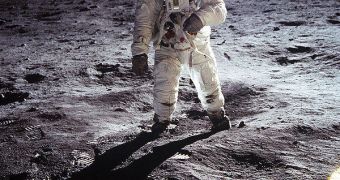Despite being the leading such structure in the world, the American space agency currently finds itself in a very awkward position, mostly because 80 percent of its workforce is comprised of people who are over the age of 40. And while this is normal, up to a certain point, because older individuals have accumulated more knowledge and experience, it's at the same time detrimental to a governmental structure that is at the forefront of discovery, and which truly explores the unknown every day.
“The first time I ever heard of people going to space was when I was 6 years old and the Challenger accident was live on TV. From then on, I was really interested,” NASA engineer and project manager Nicholas Skytland tells MSNBC. He is part of the 4-percent section of the agency's workforce that is over 30, with another 16 percent aged under 40. People in his generation had different motives to enter the ranks of the agency, as opposed to those in the older one, who were inspired by Neil Armstrong and Buzz Aldrin and their legendary Moon walk.
Only recently, Skytland, along with three of his colleagues, has made the generation divide pretty clear for the agency's management structures, when they have presented the exact differences in perception and motives that have led those who are now older and the younger employees to seek the jobs they currently occupy. The four have also highlighted the differences in technology and communication capabilities between the two generations, the one that saw the Moon landing and the one born roughly in the 1980s.
Now, following its report, the agency is seriously engaged in social media initiatives, having renounced passing all news to the public via media filters. Previous NASA administrator Michael Griffin has supported its initiative during his term, and it seems to have paid off. Recently, when Discovery was launched, the agency's deputy assistant administrator for public affairs, Bob Jacobs, was Twittering on two accounts about the progress of the shuttle, during the press conference.
“We're exploring what a government role in public social networking sites is. It's a huge challenge for [the] government because people get entrenched in a model of working that can be difficult to change. For decades, our folks have been churning out news releases. Now we can get information out not through a media filter, but it's a slow process,” he said.

 14 DAY TRIAL //
14 DAY TRIAL //